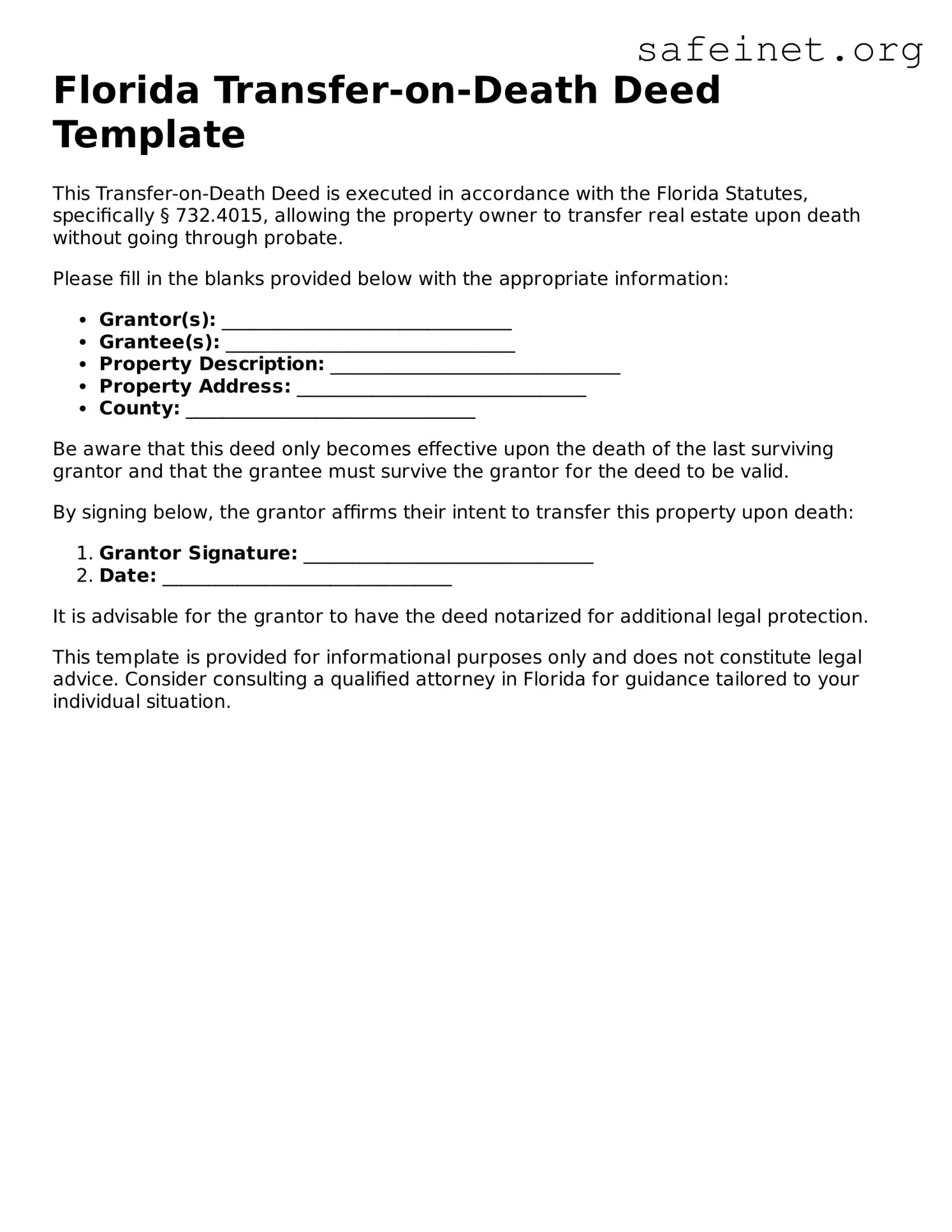The Florida Transfer-on-Death Deed (TODD) is a unique way to transfer property upon a person's passing, but it shares similarities with several other legal documents. One such document is the Last Will and Testament. Like the TODD, a will allows individuals to dictate how their assets will be distributed after death. However, a will must go through the probate process, which can be lengthy and costly. In contrast, the TODD bypasses probate, allowing for a more straightforward and immediate transfer of property to beneficiaries upon the death of the owner.
Another comparable document is the Revocable Living Trust. This trust enables individuals to manage their assets during their lifetime and designate how they will be distributed upon death. Similar to the TODD, it avoids probate, providing a streamlined process for asset transfer. However, while a TODD applies specifically to real property, a living trust can encompass a wider range of assets, including personal property and financial accounts.
The Durable Power of Attorney is yet another document that shares similarities with the TODD. This legal tool allows an individual to appoint someone else to manage their affairs if they become incapacitated. While the TODD applies to property transfer upon death, both documents aim to ensure that an individual's wishes are respected and carried out by trusted persons, thereby providing a level of control over one's assets.
The Designation of Beneficiary form is also similar in function to the TODD. This form allows individuals to specify who will receive certain assets, such as bank accounts or retirement accounts, upon their death. Like the TODD, it facilitates a direct transfer of assets to beneficiaries without the need for probate. However, the Designation of Beneficiary form typically only applies to specific accounts, whereas the TODD is focused solely on real estate property.
The Joint Tenancy with Right of Survivorship is a property ownership arrangement that mirrors the TODD in its intent. In this arrangement, when one co-owner passes away, the deceased’s interest automatically transfers to the surviving co-owner. This automatic transfer avoids probate, much like the TODD. However, joint tenancy requires multiple owners and can complicate ownership if any co-owner decides to sell their share, unlike the TODD, which is a unilateral decision.
Lastly, the Life Estate is another document with characteristics similar to the TODD. A life estate allows a person to use and benefit from a property during their lifetime, with the understanding that the remaining interest will pass to designated individuals after their death. Both instruments ensure that property is transferred outside the probate process. The key difference lies in the control; a life estate may limit the property owner's ability to sell or encumber the property without the consent of the remaindermen, whereas a transfer-on-death deed allows the owner full control until death.
